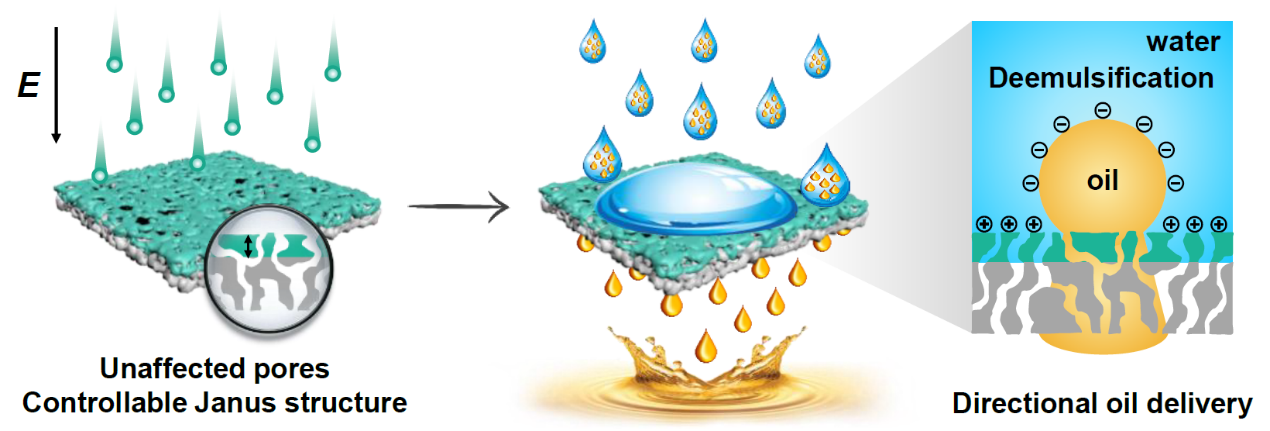Congratulations to Jing Yang and Hao-Nan Li for their recent publication on Journal of Materials Chemistry A
Janus membranes (JMs) with opposite wettability have brought about new opportunities to tackle the challenging issues encountered in oil/water separation. However, these achievements suffer from empirical availability for the separation of oil-in-water emulsions, lacking a controllable way to tune the synergistic effect of asymmetric configurations, which is the “inner” driving force for practical performance. Herein, the role of the asymmetric configuration is theoretically and experimentally demonstrated in the Janus structural design, membrane fabrication, and separation performance for oil-in-water emulsions. These significant insights are particularly gained by analyzing Young–Laplace capillary pressures, measuring the adhesive forces between the oil and membrane surface, and monitoring the demulsification and oil transportation processes. Fluorescence imaging has been used to in situ visualize the separation process and then a mechanism is firstly proposed as demulsification followed by rapid unidirectional oil transportation for surfactant-stabilized oil-in-water emulsions. The two successive processes are strongly governed by the controllable asymmetric configuration of the JMs. An efficient oil separation can, therefore, be achieved from surfactant-stabilized oil-in-water emulsions with a wide size distribution (from nanometers to microns) by optimizing these two stages via tuning the hydrophilic/hydrophobic configuration and surface charge property of the JMs. Therefore, this work is expected to yield a design principle and guideline for developing JMs with applicability in the practical separation of oil-in-water emulsions.
DOI: 10.1039/C9TA00575G

.png)